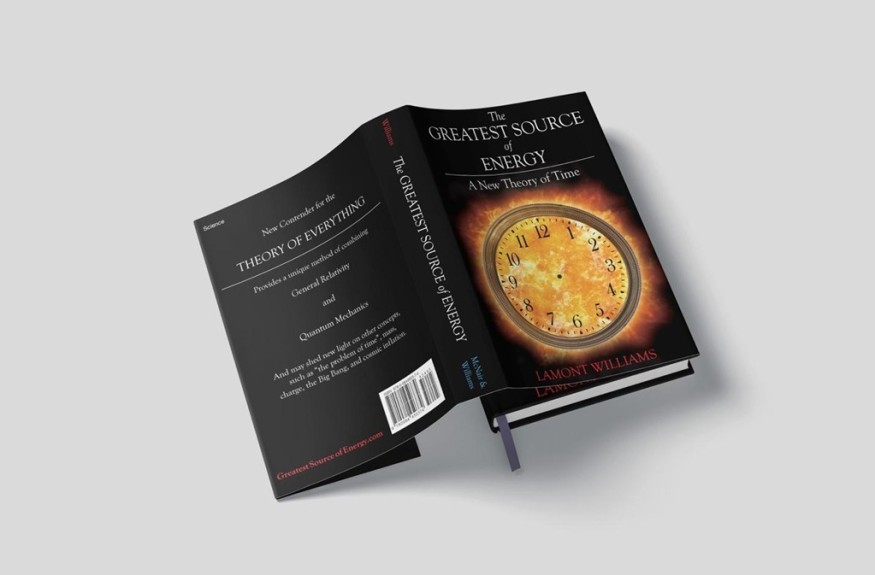
Does time itself have energy—is this the greatest energy in the universe?
Time is substantially connected to how we measure and discuss energy, but time is rarely, if ever, considered to have energy itself. This potential relationship between time and energy is one of the greatest yet unexplored areas of science today. Understanding how time and energy might be united could lead to new possibilities, from breakthroughs in energy production to advancements in space exploration.
The Challenge of Understanding Time and Energy
As we explore the mysteries of the universe, we're faced with two powerful yet conflicting theories: general relativity and quantum mechanics. General relativity describes how gravity and space-time operate on large scales, such as in black holes and galaxies. Meanwhile, quantum mechanics explains the behavior of particles at the smallest scales, where strange and unpredictable phenomena prevail.
The two theories explain aspects of the universe in ways that don't seem compatible with one another. For example, one (relativity) suggests time is relative, based on an observer's perspective, while the other (quantum mechanics) presents time as an absolute, constant entity. For decades, scientists have been unable to reconcile these views into a single unified theory.
A Groundbreaking Theory
Lamont Williams, in his book The Greatest Source of Energy: A New Theory of Time, proposes a revolutionary solution to this fundamental problem. Williams introduces Temporal Energy Theory based on decades of research.
His model links energy with time, and then the two of them together with the universe's fundamental forces. It not only suggests a unified view of time but also proposes that time itself is the greatest source of energy in the universe and is key to uniting the forces of gravity, electromagnetism, and the nuclear forces into a single framework.
Through Temporal Energy Theory, Williams bridges the gap between Isaac Newton's absolute view of time and Albert Einstein's relative view. In this model, Williams suggests that both perspectives are valid and complementary.
These ideas offer a glimpse into how a single, unified theory of everything might be within our reach, a breakthrough that could change our understanding of the cosmos.
Revolutionizing Physics and Technology
Combining general relativity and quantum mechanics could unlock a world of scientific breakthroughs. For starters, it could provide new ways to understand elusive phenomena like dark matter, dark energy, and the asymmetry between matter and antimatter.
Williams proposes that the nature of time may hold the key to resolving these mysteries and could lead to fresh insights into why the universe behaves the way it does.
Beyond these theoretical implications, the practical benefits of understanding the relationship between time and energy could be enormous.
Time's energy could offer a new path for more efficient energy systems, enabling technologies that we've only imagined in science fiction. It might even pave the way for humanity to achieve spacefaring capabilities, unlocking possibilities for interstellar travel, exploration, and habitation.
The Author: Lamont Williams
Lamont Williams, a communications specialist and science writer at the National Institutes of Health, is no stranger to the intersections of science and communication. With over 25 years of experience in the public and private sectors, Williams's ability to translate complex scientific concepts into clear, accessible language has garnered recognition in his field.
His expertise spans medicine, biology, and physics, and his efforts in science communication have earned him prestigious accolades, including "Distinguished" and "Excellence" awards in the International Technical Publications Competition of the Society for Technical Communication.
While Williams' career has revolved around breaking down complex information, his own intellectual pursuits have led him to explore the mysteries of time, energy, and the forces of nature. His book The Greatest Source of Energy is the zenith of years of study, thought, and a deep curiosity about how the universe functions at its most fundamental level.
What the Future Holds
Williams believes that understanding the energy of time is crucial to advancing human civilization. "Right now, we only tap a minuscule amount of the energy present in the universe," Williams states. "With more knowledge about the energy of the universe, we may one day be the multiplanetary, interstellar species that we see only in fiction."
In his book, Williams clarifies complex scientific ideas, guiding readers through his innovative theory linking time to energy and, in the process, suggests a revolutionary framework for uniting the fundamental forces of nature.
For anyone curious about how time shapes the universe and how this connection could unlock the next great leap in both theoretical and applied science, The Greatest Source of Energy offers a new and revolutionary perspective.
See a video presentation of the work here.
© 2025 ScienceTimes.com All rights reserved. Do not reproduce without permission. The window to the world of Science Times.












